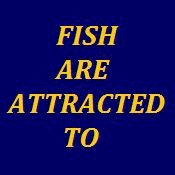I really do want to try and get out of the way of this discussion, but a lot has been said here and elsewhere, and I want to add a few more points by way of clarification. First, it is important to recognize that WT has not filed a suit in this case, only issued a notice. It is perfectly conceivable that WDFW could take an action or make a proposal that would convince us not to sue, or at least wait and see. We sincerely hope that happens (lawsuits are expensive, risky, and a lot of hard work). Washington Trout is staffed by professional scientists and environmental advocates, not frothing at the mouth lunatics, despite what you may have heard or believe.
(As a point of minor clarification to a specific concern expressed above: Our notice focuses solely on chinook production. If any of the facilities we list produce other species, our action is not likely to have a major impact on those operations. We can only seek relief for violations of the ESA. It is perfectly conceivable that WDFW could continue to produce steelhead, coho, chum, or some other species at those or any facility without causing the specific harm to chinook that we allege, as long as they resolve any site impacts that may exist [the types of things that prompted our Tokul suit]. We might not like the impacts those operations would have on those species, but we’d have no basis to sue under the ESA.)
While both the chinook and Tokul cases focus mainly on site and operational impacts from hatcheries, Washington Trout is also very concerned about the well documented genetic, reproductive, and population impacts of artificial supplementation programs. Simply put, while hatchery fish can be genetically similar to their wild counterparts in a broad sense, their genetic QUALITY is inferior, manifested in traits that include lower age and size at maturity, lower fecundity of females, and fewer and less pronounced secondary sexual characteristics in males (spawning coloration, back humps, jaw kypes, exposed teeth). These traits directly contribute to lowered reproductive success, generally 1/2 to 2/3 that of wild fish. It is important to note that hatchery fish can reproduce in the wild, just not as successfully as wild fish. Therein lies the problem. When hatchery fish mate naturally with wild fish, they pass on inferior genetic traits and lowered reproductive capability to the wild population. Not only that, when a wild fish mates with a hatchery fish, it will produce fewer and less fit young than if it mated with another wild fish. For you skeptics, I am afraid that within the scientific and management communities these facts are simply not disputed; every single serious scientific study that has examined the issue has found the same thing. The only serious debate among managers is about the significance of these impacts and whether they can be successfully mitigated.
You should all be aware that since at least 1997, WDFW has acknowledged that 39 of its state hatcheries have at least one site impact that harms wild fish, the complete or partial blockage of fish-passage to important spawning and rearing habitats. Of those 39, 30 are located in the habitats of ESA-listed salmon and steelhead. Of those 30, WDFW acknowledges that 20 are actually blocking listed fish from reaching their habitats (13 in Puget Sound). This is a clear violation of the ESA, but even though WDFW has known about the problem for at least five years, and the affected fish have been listed from three to four years, WDFW has not repaired a single one of these barriers, while they continue to spend money to produce fish at every one of the facilities. Are all of you happy with that situation? Do you honestly expect it to change without some application of pressure? WDFW has been saying for five years that it’s “working on it” but that it “doesn’t have money,” but it continues to produce fish at facilities out of compliance with state and federal law. How about a shift in its “top priorities?” WDFW is the lead state agency for salmon recovery. That should be job #1. It seems to me a realistic angler would realize THAT is in the best interest of fish AND fishers.
If I may, I’d like to take off my WT hat and speak as a fellow angler for just this paragraph. (As some of you may remember, I edited NW Fishing Holes Magazine from 1995 to 1999.) WT wants the same thing all of you do. Lots of fish. Apparently, we disagree with some of you on how to get there. As I said, WT does not advocate for ANY stakeholder group, and it is against our bylaws to get involved in allocation issues, but I personally DON"T agree that attacking poor hatchery practices is attacking sportfishing. I sincerely believe and have said again and again, dating back to when I was editing Fishing Holes, that strong, effective measures to recover wild fish are the best, likely the only way to ensure the future of sportfishing in Washington. I'm sorry, but I challenge any of you to show me any historical, scientific, or even anecdotal evidence that Washington's hatchery program has made sportfishing better. I can show you reams of evidence that it has been and continues to be a major factor in the decline of the resource.
Putting my work-hat back on, I am not embarrassed to admit that WT puts fish ahead of fishers. And I am not trying to be coy. WT believes that the 18 hatcheries listed in our notice do the resource much more harm than good; we would be happy to see them closed. But we would be perfectly happy to find out if WDFW can run the hatcheries in a way that resolves the problems we cite. If they have a plan to resolve some or most of them, and at least bring the facilities into compliance with the law, we’re prepared to listen; in fact we’ve been waiting to listen for two years now. (I’ll remind you again that WDFW has the option of getting off its butt and completing the process to apply for ESA exemption.)
Finally I also want to remind people that WT has been a very good friend to the recreational fishing community on what I gather is it's #1 issue - commercial harvest. We were the ONLY environmental group in the state to support (and actively campaign for) the I-696 Ban All Nets initiative in 1999. Without any specific funding to do so, that's about all this office worked on that fall. Since then, we've been carrying A LOT of the water in that fight. We challenged the harvest criteria in the 4d Rule; we challenged the WDFW/Tribal Resource Management Plan for Puget Sound chinook harvest, and we're currently spending a lot of money to sue NMFS to stop the RMP (which if not stopped, will reduce chinook escapement goals in PS rivers by as much as half!); we are in the forefront of the fight over the fisco with the "experimental" tangle-net fishery for spring chinook on the lower Columbia that had such a devastating impact on LC and Willamette steelhead. Our efforts on that issue so far have caught the attention of the NW Power Planning Council, which funds the "experimental" fisheries, and could help stop that fishery from going forward next spring. Again, if you’d rather learn more about WT before demonizing us, please visit
www.washingtontrout.org .
Ramon Vanden Brulle
Communications Director
Washington Trout













 Previous Topic
Previous Topic Index
Index



